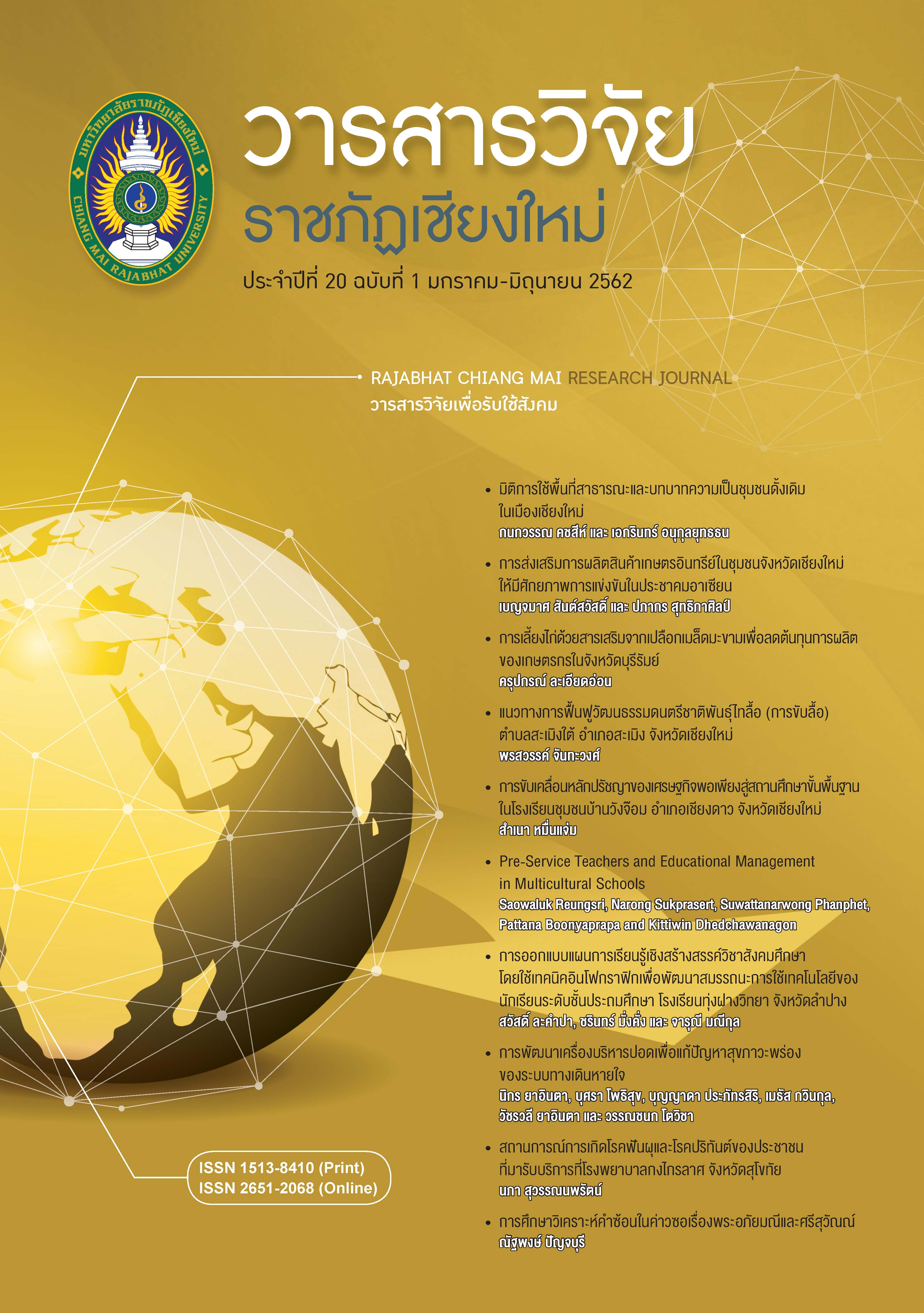The chicken cultivation with herbs form tamarind seed coat to reduce production costs and Encouraging farmers in Buriram
DOI:
https://doi.org/10.14456/rcmrj.2019.153263Keywords:
polyphenols, herbs, tamarind seed coat, Polyphenols, Herbs, Tamarind seed coatAbstract
This project deals with extraction, biological evaluation and feed of tamarind seed coat powder. The polyphenols in the tamarind seed coat powder were extracted by using 95 % ethanol as a solvent. The tamarind seed coat powder 100 kg give rise crude extracted 200 g. The polyphenol content of the extract at the concentration 100 ppm found the mean at 18.085 ppm. Total antioxidant activity of the extract by which DPPH assay has IC50 19.59 ppm, for total antioxidant activity of the extract by FRAP assays get the highest ferrous concentration was 0.864 ppm and for ABTS+ method got the percent radical scavenging activity was 51.389 ppm. For the average daily gain, feed intake, and feed conversion ratio were increased with the extract concentration were added to 300 mg/kg but the lipid in abdominal cavity was decreased. It has shown that the polyphenol contents from tamarind seed coat were promoted to build chicken meat. This project shown the extract from tamarind seed coat was useful for feed not only for family but also for the industry.
Downloads
References
ดวงใจ บุญกุศล. (2560). ผลของสารสกัดสมุนไพรต่อตัวอ่อนพยาธิในกลุ่ม strongyles ของแพะ. วารสารเกษตรพระวรุณ, 14(2), 208-216.
พิมลพรรณ อุตเรือน และคณะ. (2561). การทดสอบระดับของฮอร์โมนคอร์ติซอลที่ส่งผลต่อความเครียดของไก่พื้นเมืองเพศเมีย (Gallus gallus domesticus) ในรูปแบบการผสมพันธุ์ในระดับท้องถิ่นแบบต่างๆ. วารสารวิจัยราชภัฏเชียงใหม่, 18(1), 70-77.
วุฒิไกร บุญคุ้ม, มนต์ชัย ดวงจินดา, บัญญัติ เหล่าไพบูลย์ และเทวินทร์ วงษ์พระลับ. (2557). อิทธิพลของความเครียดเนื่องจากความร้อนต่อค่าพารามิเตอร์ทางพันธุกรรมและผลผลิตไข่ในไก่พื้นเมืองไทยพันธุ์ประดู่หางดำ. วารสารแก่นเกษตร, 42(3), 319-328.
สถาบันอาหาร. (2561). อุตสาหกรรมไก่เนื้อ. สืบค้นจาก https://www.fic.nfi .or.th/food
อุษณีภรณ์ สร้อยเพชร และรุ้งฟ้า จีนย้าย. (2560). ประสิทธิภาพการใช้สมุนไพรไทย 5 ชนิดในการกำจัดพยาธิภายในไก่พื้นเมือง. วารสารวิจัย มหาวิทยาลัยราชมงคลธัญบุรี, 16(1), 27-31.
Abdel-Hameed, E. S. (2009). Total phenolic contents and free radical scavenging activity of certain Egyptian Ficus species leaf samples. Food Chemistry, 114(4), 1271-1277.
Caluwa,E. D.,K. Halamova, and P. V. Damme. (2010). Tamarindus indica L. : A review of tradional uses, phytochemistry and pharmacology. Afrika Focus, 23(1), 53-83.
Ewing,S.A.,D.C. Lay,Jr., and E.Von Borell. (1999). Farm Animal Well-Being-Stress Physiology, Animal Behavior, and Environmental Design. Prentce Hall,Upper Saddle River, New jersey.
Javis, M. C. and Apperley, D. C. (1990). Direct observation of cell wall structure in living plant tissues by solid-state 13C NMR spectroscopy. Plant Physiology, 92(1), 61-65.
Pumthong, G. (1999). Antioxidant Activity of Polyphenolic Compounds Extracted from Seed Coat of Tamarindus indica Linn, Chiang Mai University, Thailand.
Saowanee Luengthanaphol, Darin Mongkolkhajornsile, Supaporn Douglas, Peter L. Douglas, Lae-ied Pongsopa and Suwassa Pongamphai. (2004). Extraction of antioxidant from sweet Thai tamarind seed coat preliminary experiments. Journal of Food Engineering, 63(3), 247-252.
Strickland, F. M., Kuchel, J. M. and halliday. G. M. (2004). Natural products as aid for protecting the skin’s immune system against UV damage. Cutis, 74(1), 24-28.
Sudjaroen, Y., Haubner, R., W urtele, G., Hull, W. E., Erben,G., Spiegelhalder,B., Changbumrung, S., Bartsch, H., and Owen, R.W. (2004). Isolation and structure elucidation of phenolic antioxidants form Tamarind (Tamarindus indica L.) seeds and pericarp. Food and Chemical Toxicology, 43(11), 1673-1682.
Downloads
Published
How to Cite
Issue
Section
License
1. Articles, information, content, images, etc published in the “Community and Social Development Journal” are copyrighted by the Community and Social Development Journal, Chiang Mai Rajabhat University. In order to properly distribute the articles through print and electronic media, the authors still hold the copyright for the published articles under the Creative Commons Attribution (CC BY) license, which allows the re-distribution of the articles in other sources. References must be made to the articles in the journal. The authors are responsible for requesting permission to reproduce copyrighted content from other sources.
2. The content of the articles appearing in the journal is the direct responsibility of the article authors. The editorial board of the journal does not necessarily agree with or share any responsibility.














